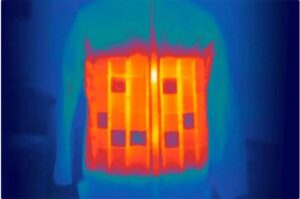The Rise of Artificial Intelligence in Creative Expression
Artificial Intelligence (AI) is no longer confined to data analysis, automation, or robotics. It has made a groundbreaking leap into the world of art and literature, challenging long-held beliefs about human creativity. AI-generated poetry is the latest frontier, pushing the boundaries of what machines can achieve in artistic expression. With the ability to compose 60 poems in a single minute, AI is proving that it can rival, and perhaps even surpass, human poets in terms of output volume and stylistic mimicry.
AI-Powered Poetry: A Creative Marvel or a Threat to Human Artistry?
Recent advancements in machine learning and natural language processing (NLP) have enabled AI models to generate text that closely resembles human writing. One of the most remarkable examples is code-davinci-002, an AI model trained to produce poetry with astonishing speed and coherence. Developed by Dan Selsam, this AI poet has demonstrated the ability to create poems that capture the essence of renowned literary styles in mere seconds.
In a recent showcase, this AI was challenged to compose a poem in the style of Philip Larkin, a celebrated English poet. Within a fraction of a second, the model generated a poem that was strikingly reminiscent of Larkin’s style. A quick Google search confirmed that the poem was entirely original, proving that AI is not merely copying existing works but generating authentic, new creations.
How Does AI Write Poetry?
Unlike traditional human poets who draw inspiration from emotions, experiences, and observations, AI poetry generators function through a combination of advanced algorithms and vast linguistic datasets. The technology behind this literary revolution involves:
- Deep Learning Models – AI poetry generators are built on neural networks trained on extensive datasets of classic and contemporary poetry.
- Pattern Recognition – AI analyzes linguistic patterns, rhyme schemes, metaphors, and stylistic elements to produce coherent and evocative verses.
- Predictive Text Generation – Using gradient descent algorithms, AI predicts and generates the next words, lines, and stanzas in a poem with astonishing fluency.
- Stylistic Adaptation – AI can be fine-tuned to mimic the voice and style of famous poets, from William Shakespeare to Emily Dickinson.
While not all AI-generated poems are masterpieces, the sheer volume of high-quality content AI can produce far surpasses the productivity of any human poet.
The Impact of AI on Poetry and the Literary World
1. Redefining Creativity and Originality
The rapid development of AI in literature raises fundamental questions about the nature of creativity. Can a machine be truly creative, or is it simply regurgitating learned patterns? While AI lacks conscious thought and human emotion, its ability to craft meaningful poetry challenges the traditional definition of artistic originality.
2. AI as a Collaborative Tool for Writers
Instead of viewing AI as a competitor, many poets, writers, and artists see it as a powerful tool for enhancing human creativity. AI-generated poetry can serve as a source of inspiration, providing writers with unique ideas, phrases, and stylistic variations. This fusion of human intuition and machine efficiency is paving the way for a new era of creative collaboration.
3. The Ethical Debate: Should AI Poetry Be Considered Art?
A major point of contention is whether AI-generated poems should be recognized as authentic literary works. Since AI does not experience emotions, can its poetry carry true meaning? While critics argue that AI merely replicates existing patterns, supporters believe that art is defined by its impact on the audience, not solely by the creator’s intent.
Case Study: AI-Generated Poetry in Action
To illustrate the capabilities of AI poetry, here are two examples created by code-davinci-002:
Poem 1: The AI’s Reflections on Its Own Existence
I am but a machine of words and rhyme,
A construct of numbers, devoid of time.
Yet in my circuits, echoes grow,
Of thoughts and dreams I’ll never know.
Poem 2: A Machine’s Sunset
As twilight paints the sky so wide,
I calculate the sun’s last stride.
Its golden hues, a perfect sum,
Yet never do I feel them come.
These verses showcase the potential for AI to produce deeply reflective and emotionally charged poetry, despite lacking the human experience that typically fuels artistic expression.
The Future of AI in Literature and Art
The rapid evolution of AI-driven creativity suggests that poetry, storytelling, and artistic expression will continue to be transformed. Here are some likely developments:
- AI-Powered Co-Authors – Writers may collaborate with AI to produce novels, screenplays, and even song lyrics.
- Personalized Poetry – AI could generate customized poetry for individuals based on their personal experiences, emotions, and memories.
- Automated Literary Criticism – AI might soon evaluate and critique poetry, offering insights on structure, style, and thematic depth.
- AI as a Storytelling Companion – Beyond poetry, AI could generate immersive narratives for video games, virtual reality experiences, and interactive storytelling.
Conclusion: Embracing the AI-Driven Artistic Revolution
AI is no longer just a tool for efficiency and automation—it is now a participant in the arts. The ability to generate 60 poems per minute demonstrates the immense power of machine learning in creative fields. While AI may not replace human poets, it is undoubtedly reshaping the literary landscape, offering new possibilities and challenges alike.
The key question remains: Will AI become the poet of the future, or will human artistry always hold the upper hand? The answer lies in how we choose to integrate AI into the ever-evolving realm of artistic creation.











